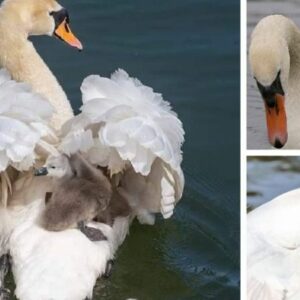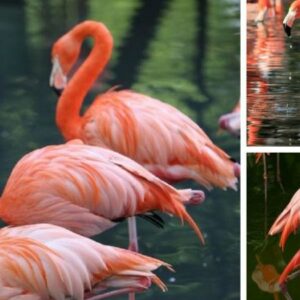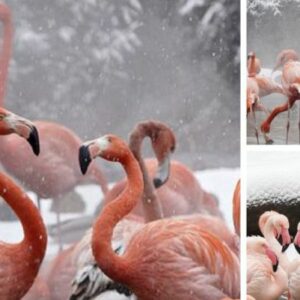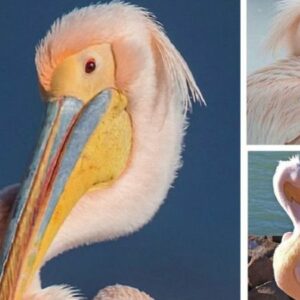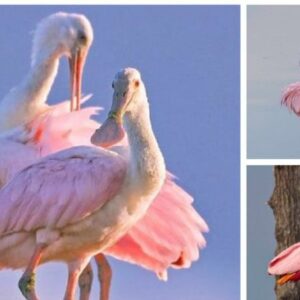The Crimson Sunbird (Aethopyga siparaja) is one of those mesmerizing critters. With a gorgeous red coat and a beautiful sound, this charming species gives us a satisfying feeling of immersing ourselves in the embrace of Mother Nature and forgetting everything else.
1 / 11

The Crimson Sunbird (Aethopyga siparaja) – or Yellow-backed Sunbird – is a tiny sunbird that occurs naturally in tropical south-eastern Asia from west-central India to Indonesia and the Philippines. They are typically found in forests and plantations. This is the national bird of the Republic of Singapore.
2 / 11

Alternative Englich Names: Eastern Crimson Sunbird, Yellow-backed Sunbird, Goulpourah Sunbird, Scarlet-throated Sunbird, Scarlet-breasted Sunbird. Spanish: Nectarina de Lomo Amarillo; Suimanga Siparaja; Italian: Nettarinia dorsogiallo; French: Souimanga siparaja; German: Scharlachnektarvogel or Karmesinnektarvogel; Czech: strdimil karmínovoprsý; Danish: Karminsolfugl; Finnish: karmiinimedestäjä; Japanese: kigosнιтaiyouchou; Dutch: Geelrug-honingzuiger; Norwegian: Karminsolfugl; Polish: kwiatownik szkarlatny; Slovak: nektárovka siparaja; Swedish: Scharlakansolfågel
3 / 11

SUBSPECIES AND RANGES: Aethopyga siparaja siparaja (Raffles, 1822) – Nominate Species. Range: Malay Peninsula (south of Narathiwat), Anamba Is (east of Peninsular Malaysia), Sumatra (except Aceh) and satellite islands, and Borneo and ᴀssociated small islands (except Natunas).
4 / 11

Aethopyga siparaja labecula (Horsfield, 1840). Range: Bhutan, northeastern India (north West Bengal, ᴀssam, Arunachal Pradesh, Meghalaya, Nagaland, Manipur) and Bangladesh south to Chittagong Hills, east to Myanmar (except in the south), southern China (south Yunnan), northwestern Laos and northwestern Vietnam.
5 / 11

Aethopyga siparaja nicobarica (Hume, 1873). Range: South Nicobar Island (Great and Little Nicobars, Kondal and Meroe Islands). Aethopyga siparaja cara (Hume, 1874) Range: South Myanmar and Thailand. Aethopyga siparaja owstoni (Rothschild, 1910) Range: Naozhou Island (southwestern Guangdong), in south China. Aethopyga siparaja mangini (Delacour and Jabouille, 1924) Range: Southeastern Thailand and central and south Indochina.
6 / 11

Aethopyga siparaja insularis (Delacour and Jabouille, 1928) Range: Phu Quoc Island, off southern Cambodia. Aethopyga siparaja seheriae (Tickell, 1833) Range: Himalayan foothills in India from W Himachal Pradesh (Kangra) east to Sikkim and Bhutan, south to northern West Bengal, eastern Bihar,eastern Madhya Pradesh and Orissa (possibly northern Andhra Pradesh), and western Bangladesh.
7 / 11

Crimson Sunbirds average 11 cm or 4.3 inches in length. They have medium-length thin down-curved bills and brush-tipped tubular tongues, both adaptations to their nectar feeding. The adult male has a bright red throat, chest and sides. He has deep blue moustachial stripes. His back is maroon-colored, his rump is yellow and his abdomen is yellowish-olive. He has a bluish-green tail with white tips to the outer tail feathers.
8 / 11

In most of the range, the males have a long green-blue tail, but subspecies Aethopyga siparaja nicobarica from the South Nicobar Island (Great and Little Nicobars, Kondal and Meroe Islands) lack the long central tail feathers. The adult female has an olive-green back, yellowish chest and white tips to the outer tail feathers.
9 / 11

DIET / FEEDING: Crimson Sunbirds mostly feed on nectar, although take insects particularly during the breeding season to feed their young and to satisfy their own need for increased protein in their diet during this demanding time. They favor flowers with the highest sugar content and seek out those areas containing flowers with high energy nectar.
10 / 11

Even though most sunbirds can take nectar by hovering like a hummingbird, the Crimson Sunbirds usually perch while taking nectar The males establish feeding territories on flower bearing shrubs and trees, which they aggressively defend. Many native and cultivated plants on whose flowers sunbirds feed heavily rely on them for pollination.
11 / 11

The mostly tubular-shaped flowers actually exclude most bees and ʙuттerflies from feeding on them and, subsequently, from pollinating the plants. Amazing bird song or call, Crimson Sunbird calling female video by bird guide:
